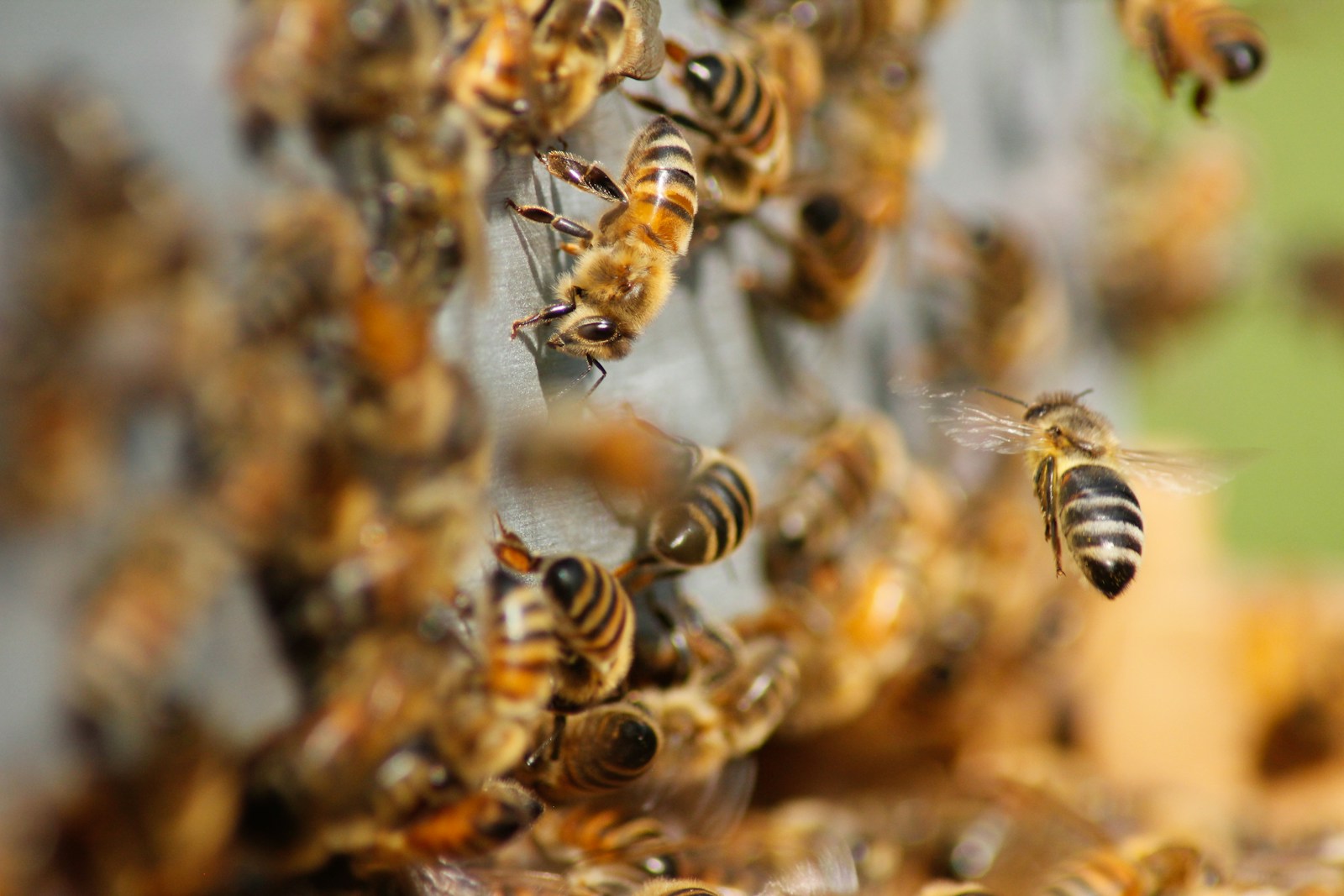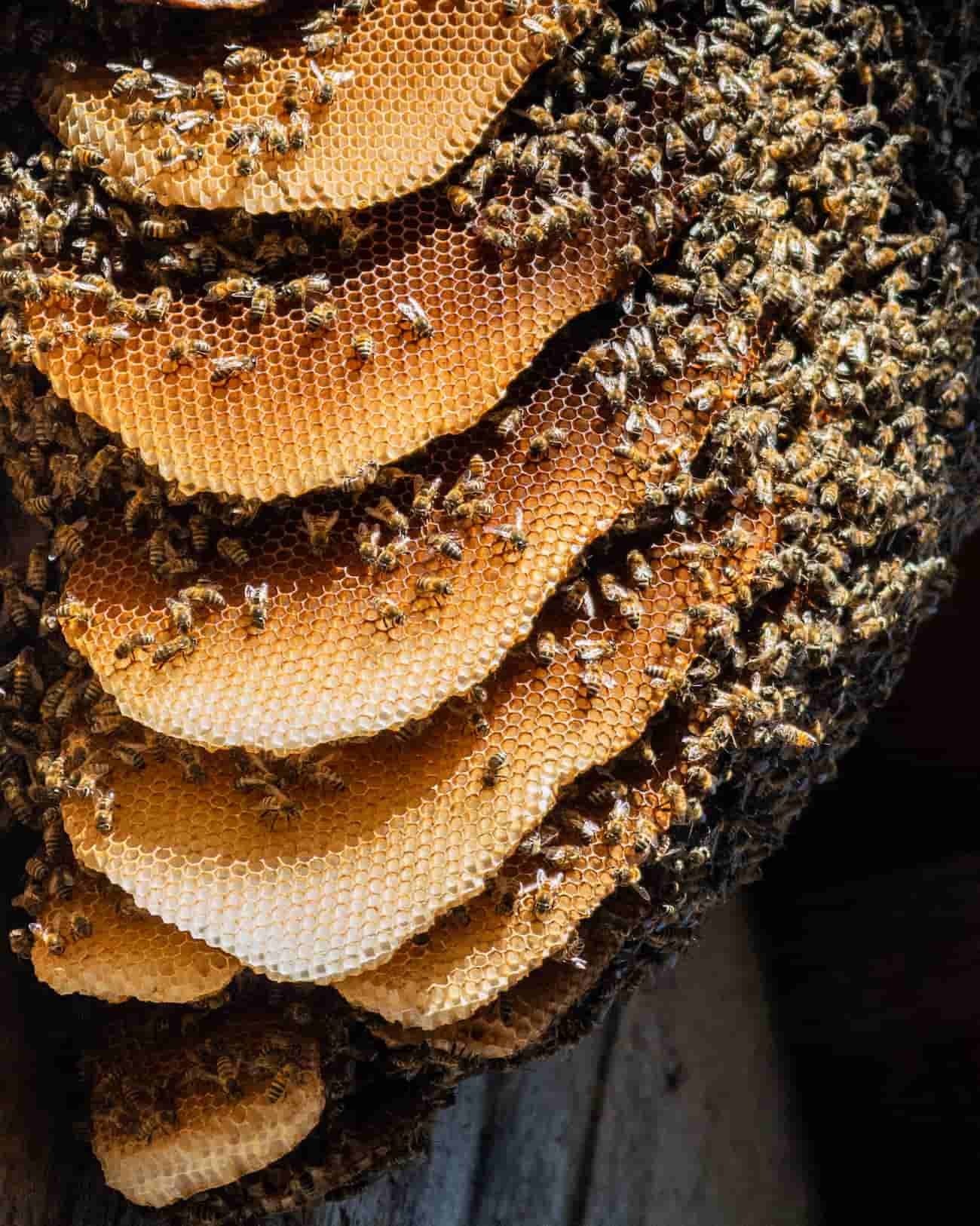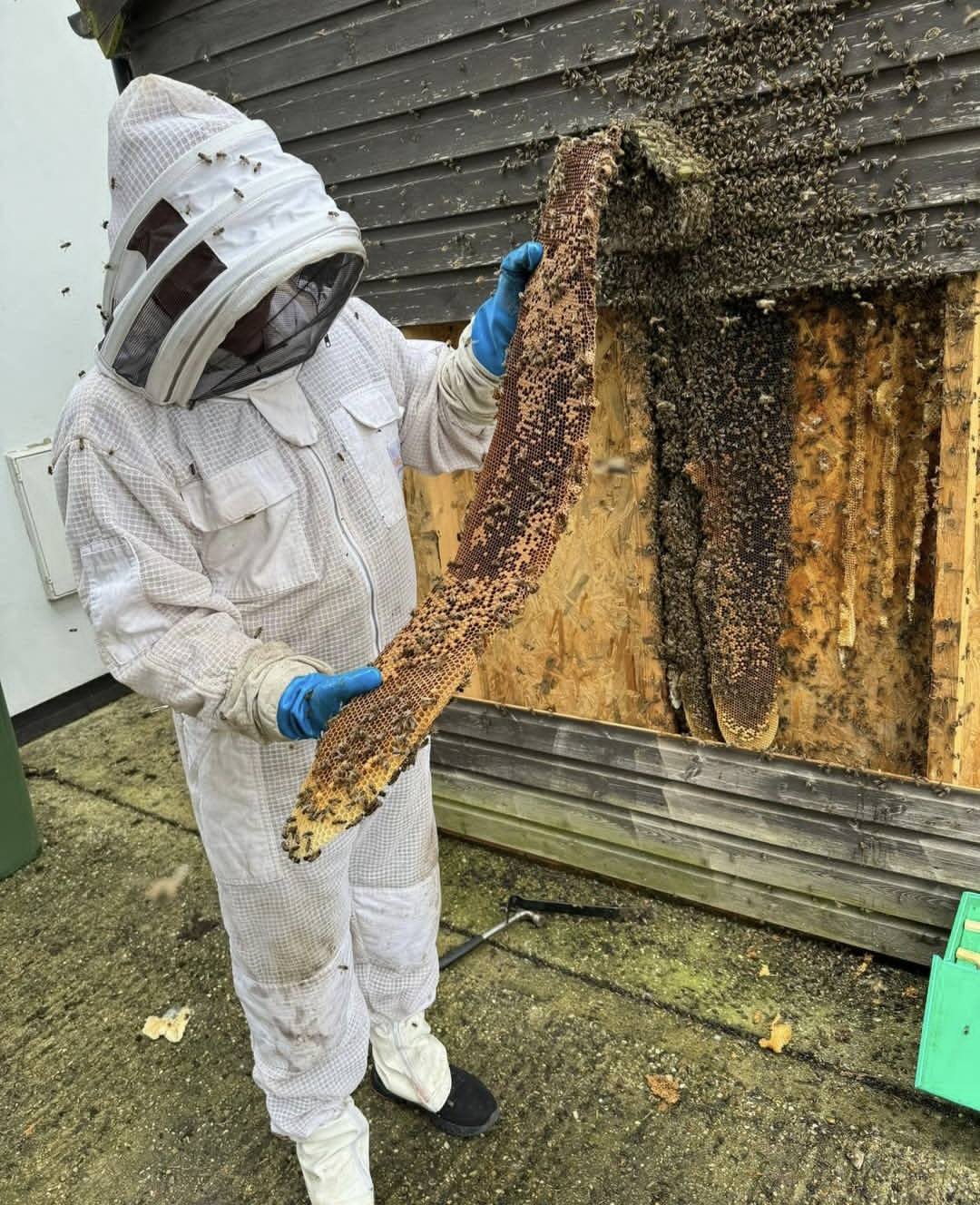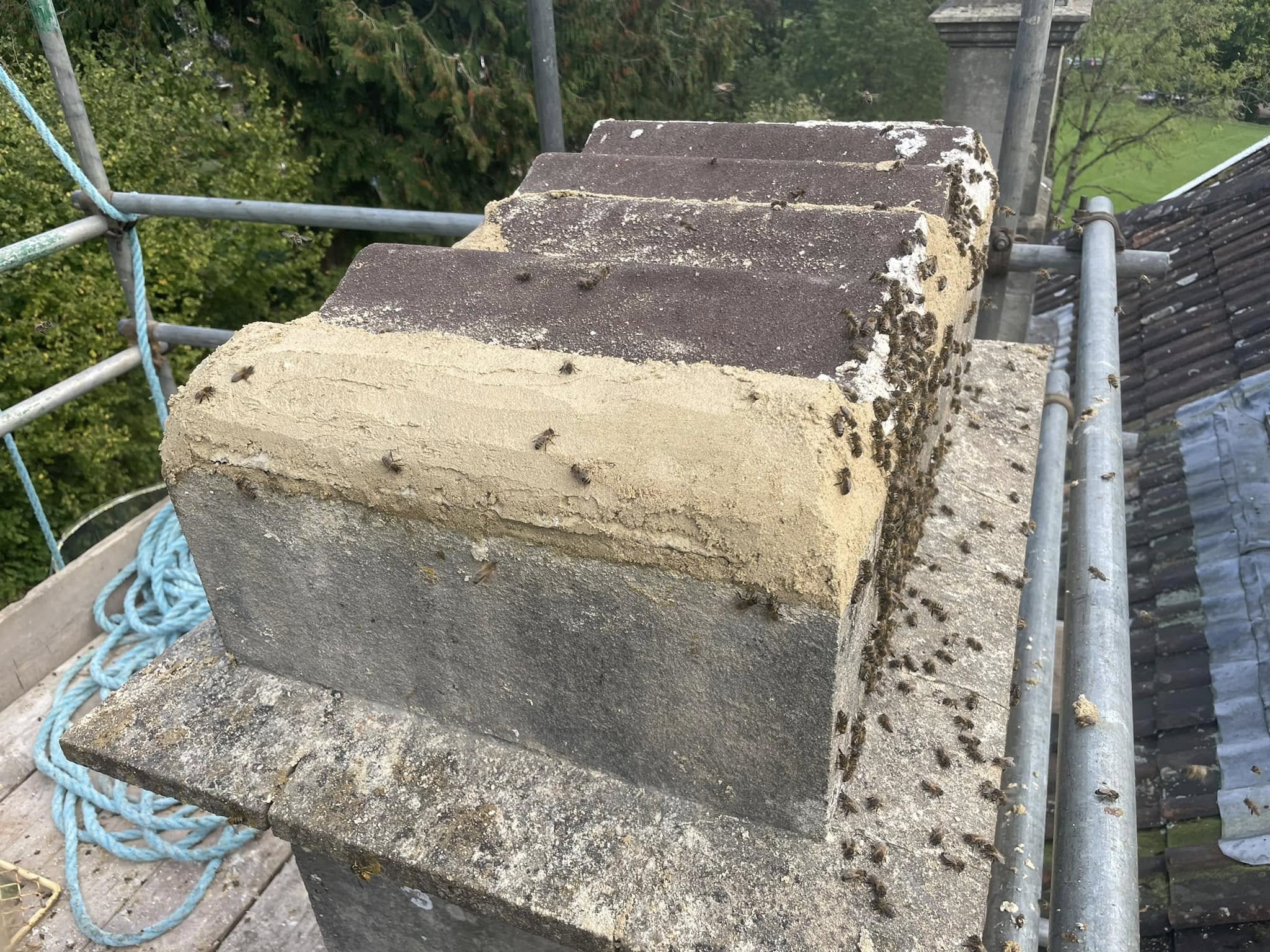
Bee Removal in Melksham
At BEEKIND™, we understand how vital it is to remove and rehome honeybees safely and responsibly. Serving homes and businesses across Melksham, our expert team combines ethical bee management with proven pest control solutions. We act swiftly to protect your property from moisture damage, odours, and secondary infestations, all while preserving local bee populations.

The Importance of Removing Honeybees from Melksham Properties
A common concern when considering honeybee removal is the cost. While the expense can be significant, neglecting to address a bee infestation can lead to more severe and costly issues down the line. On this page, our team at BEEKIND™ explains why timely honeybee removal is crucial.
Our domestic and commercial pest control company specialises in bee removal for our Melksham-based clients, as well as bird control, insect control, rodent prevention, woodworm treatments, and a range of supplementary services.
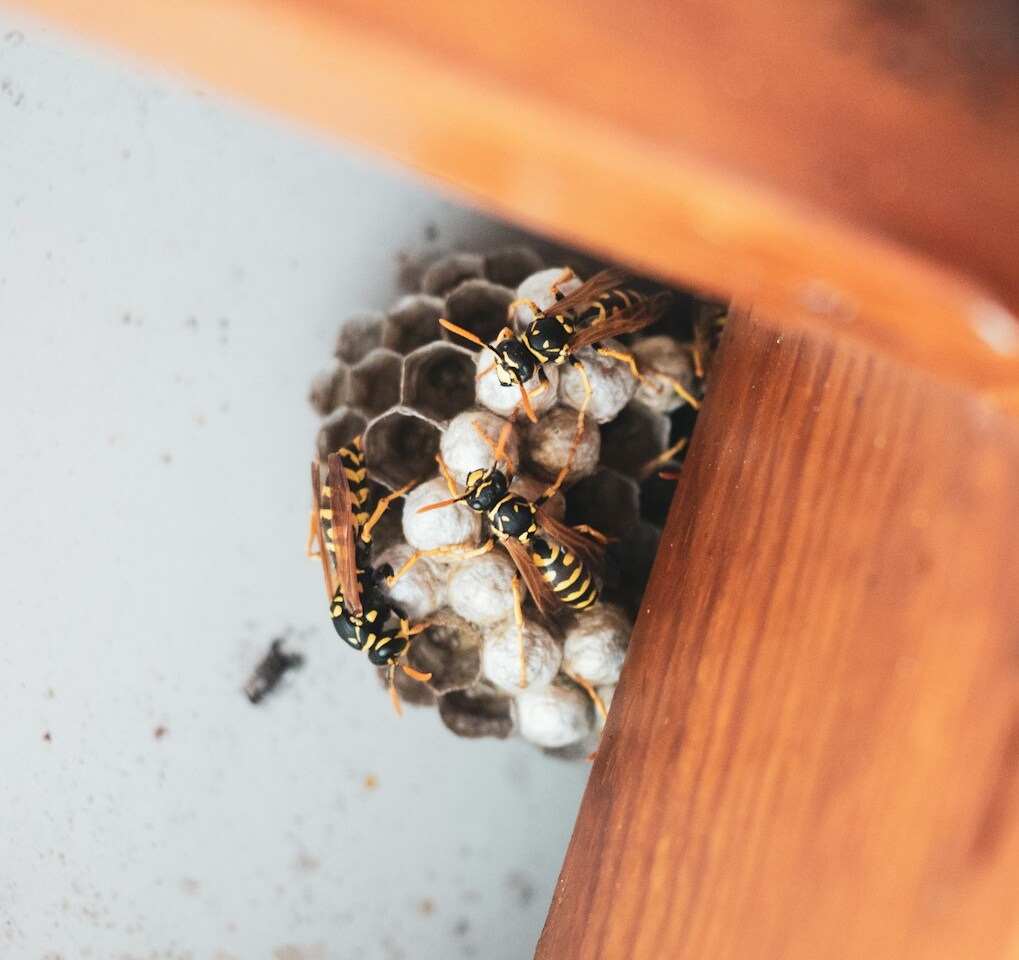
Mould & Damp Issues
Honeybee hives generate moisture and humidity, leading to dampness and mould growth within walls or structures. This can damage the integrity of Melksham properties and create unhealthy living conditions. Damp environments also attract additional pests, compounding the problem.












